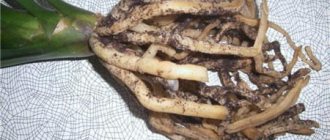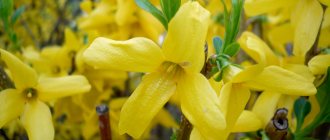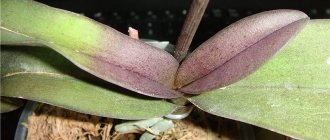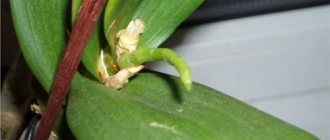In early spring, when the majestic trees are just waking up, exquisite shrubs delight the eye with many yellow buds. But this does not always happen, so gardeners wonder why forsythia does not bloom at the appointed time of year. The reasons are different, and some of them depend on the care of the plant. Let's try to understand each of them in detail, draw conclusions and act.
Improper feeding and watering
The reason that forsythia does not bloom may also be due to improper care. This is a fairly unpretentious shrub, however, it also needs help if you want to enjoy abundant flowering every year.
The main mistake is overwatering forsythia. Of course, in dry and hot summers you need water, but don’t overdo it, because... there is a high probability of causing root rot. A bucket of water under each bush once every 1-2 weeks, depending on the weather, will be enough.
A signal that forsythia is over-watered will be curling, discolored leaves, poor flowering, and faded petal color. After watering, carefully loosen the tree trunk circle. At the beginning of October, watering can be stopped altogether.
Lack and excess of nutrition, as well as improper application of fertilizers, is another common reason that forsythia does not bloom. It would be correct to do this:
- In the spring, before flowering, feed the forsythia with organic fertilizer; it stimulates the growth of shoots and activates the awakening of flower buds. Spread the rotted manure in a thick layer around the tree trunk (about 15-20 cm) and pour in plenty of warm water;
- at the beginning of flowering, plan to thoroughly loosen the soil and apply complex mineral fertilizer at the rate of 70-100 g per 1 sq.m;
- in May-June (with the end of flowering), repeat the same mineral fertilizing;
- in September, offer forsythia phosphorus-potassium fertilizer (superphosphate, ammophos, etc.) to increase the plant's frost resistance - at the rate of 1-2 tbsp. under a bush
If the soil on the site is acidified, a mandatory step for the well-being of forsythia will be the addition of crushed chalk or slaked lime, which normalize the pH level.
Poor nutrition
The absence or lack of nutrients does not have the best effect on vegetation, including flowering. Forsythia is unpretentious, so gardeners often make the same mistake - they neglect feeding. And there are those who, on the contrary, apply too much fertilizer and not in the way specified in the instructions.
For example, it is better to add organic matter in early spring, this will ensure the growth of shoots and flower buds. If the soil is too acidic, crushed chalk can correct the situation. It is applied 15-20 days after fertilizing with nitrogen fertilizers.
The growth and development of the root system is promoted by phosphorus fertilization. For this purpose, superphosphate, bone meal, ammophos, etc. are added. It is better to do this in the autumn, then the root system will have time to fully absorb all the nutrients before the onset of frost.
Only with proper nutrition will the shrub delight you with its lush blooms.
Failure to follow pruning rules is the main mistake of novice gardeners
One of the main factors in caring for forsythia is pruning the plant. Even beginners know the importance of this process not only for rejuvenation, but also for the health of the bush. Often, due to improper pruning, flowering stops, and this happens because on a forsythia bush the flower buds are located on biennial shoots, and therefore, if you shorten the shoot incorrectly, you can remove the unopened flower itself.
In order for pruning to be successful, it is better to carry it out gradually, without removing all the old shoots at once.
Important! For beginners, it is recommended to prune after flowering, and not before it.
Trimming
The pruning process can be roughly divided into three stages:
- removing old branches;
- bush thinning;
- shortening branches that have bloomed (by a third).
Problems with flowering: what are the reasons?
The absence of buds on a bush will always be a consequence of some reason. There are enough of them, so we will touch on each of them.
Lack of nutrition
Undoubtedly, forsythia is a very unpretentious plant, but this does not mean that it does not need feeding. In the spring, manure is spread around the bush, and after flowering, it is also necessary to plan two more fertilizing with mineral fertilizers. And if nitrogen minerals are important at first, then the last feeding should include only phosphorus-potassium microelements.
Planting a forsythia seedling
In order for a forsythia bush with yellow flowers to become a decoration of your garden, you need to know a few basic aspects of planting it.
Optimal planting dates
In principle, it is better to plant forsythia, as well as replant it, in the spring or early autumn, before frost hits. The plant needs to get accustomed to winter.
Choosing a landing site
Forsythia is a warm and sun-loving plant. Taking this factor into account is important when planting and further caring for shrubs. In the rays of sunlight, forsythia develops much better and flowering is more spectacular. But even in partial shade this ornamental shrub feels good. The place where forsythia grows should also be well protected from the wind. Typically, group planting of shrubs is done along paths and fences.
How to prepare the soil for planting
Nutrient-rich, well-ventilated soil is best for forsythia to thrive. For this plant, it is certainly better to prepare a special soil mixture. Humus, sand and leaf soil in a 1:2:1 ratio will take root well in soil of this composition. Forsythia will not be able to fully grow in acidic soils. If the soil pH level is low, it will need to be balanced by adding wood ash.
Proper planting of seedlings
The hole for forsythia should be about half a meter deep and wide. If you plan to plant several shrubs on the site, then you need to leave a distance of at least two meters between them. The process of planting forsythia occurs as follows:
- At the bottom of the hole, a ten-centimeter layer of drainage consisting of broken bricks or crushed stone should be laid.
- On top of the drainage there is a five-centimeter layer of coarse sand.
- The plant must be carefully removed from the container and lowered into the hole so that the root collar is visible on the surface.
- The roots need to be covered with the prepared soil mixture.
- The trunk circle needs to be trampled down a little.
- At the end, the forsythia needs to be watered and mulched with humus, straw or fallen leaves.
Emphasis on growing rules
To properly plant forsythia seedlings, you need to do this in the fall. Planting is best done in windless, sunny areas. But the shrub will also feel comfortable in the shade, so it will fit perfectly into the landscape next to the windows of the house.
In order not to later ask the question: “Why does forsythia bloom poorly?”, it is necessary to pay special attention to the choice of soil. Golden bush grows well in light and fertile soils
The landing diagram looks like this:
- An optimal soil mixture is formed from humus, leaf soil and sand in proportions 1:1:2
- A planting hole is dug 65x65 cm in size and 65-75 cm deep.
- Several plants should be planted 1-3 meters apart.
- One-fourth of the hole must be filled with a drainage layer, which consists of crushed stone or broken brick.
- Finally, the seedling is placed in the prepared hole, the soil mixture is poured in and watered well.
Caring for forsythia is not particularly difficult:
In autumn, it is necessary to hill up the bushes with fallen leaves; you can also use straw. The stems of the bush should be bent to the ground, secured well and covered with pine branches.
With the onset of spring, you need to remove the protective layer of mulch, free the branches, and add a layer of humus and mineral fertilizers at the base of the roots.
During the growing season, you should not water forsythia. The plant does not tolerate copious amounts of moisture. But if fuchsia does not bloom, the reasons may lie precisely in the lack of watering. Different types of flowers require different conditions.
The most important thing in caring for a shrub is its pruning, which is done annually. You should not cut the stems too much, otherwise the flowering may not be very lush. It is better to trim only the top parts of the branches. After winter, the dry parts of the crown are cut back to healthy ones.
Propagation of a bright plant
Reproduction of golden Asian should be done in early autumn. For this, cuttings or layering are used. Reproduction using layering is the most convenient way, because the branches that grow towards the ground can take root themselves. If this does not happen, then you need to do a few simple procedures:
- With the onset of autumn, you should bend the lower branches to the ground.
- Make an incision in the bark in the place that will be buried in the future.
- Secure the branches and cover them with 10-15 cm of soil.
- In the spring, you will simply need to cut off the shoots from the main plant.
Propagation by green cuttings occurs as follows:
1. Cuttings should be cut at the beginning of summer and kept in a solution of stimulants. 2. Plant in the ground and cover with film. 3. In the fall, the plant will already take root, but for the winter you need to remember to cover the ground with dry leaves.
Propagation by hardened cuttings is also not difficult:
1. With the onset of autumn, thick stems should be cut into small cuttings 15-18 cm long. 2. Dig the cuttings into the ground to a depth of about 8-10 cm. And in such a way that one or two buds remain on the surface. 3. Finally, the seedlings should be wrapped in straw.
Neglecting the rules of wintering plants
Very often, gardeners neglect the quality of the shelter that is built for the bush for the winter, and the consequence of this is that only the lower branches bloom in the fall or flowering in general becomes much worse. The opinion that forsythia does not require special concern about the “roof” is a little erroneous, because the branches can not only freeze, but if there is insufficient shelter, they can be damaged by birds remaining for the winter.
Usually, by winter, the tree trunk circle is covered and the branches are covered. You might think: how can you cover a fairly voluminous bush? It’s very simple: the branches are carefully tied together with a rope.
Did you know? As a shelter, it is better to use exclusively woven material that allows air to pass through, in order to prevent the buds from awakening ahead of time.
If it so happens that you had to use non-woven material, then you need to remove such cover gradually. You can use snow for additional cover.
As you can see, the health of the bush and its appearance largely depends on the care that the plant receives, and we hope that this article will help you take care of your forsythia correctly.
The use of forsythia in landscape design
Forsythia, thanks to its bright colors, can become a decoration of any garden and park. It is used as a single plant and in group plantings, combined with various trees and shrubs. Can be planted in the background of a mixborder. Pairs beautifully with coniferous trees. Forsythia will perfectly decorate any supporting wall. Looks good on slopes and as a hedge.
In the summer, neat bushes will become an excellent backdrop to bright flowers, and in the fall they will add purple or orange colors to the garden palette.
Forsythia: propagation
Forsythia is propagated by cuttings, layering or root shoots. The plant can also be propagated by seeds. But this is an ineffective and costly method, which is often carried out in nurseries. The first three are suitable for independent reproduction.
Forsythia cuttings
Forsythia is propagated by cuttings after flowering has finished in mid-summer. Cut small shoots 10-15 cm long with several buds and leaves. Dip the lower cut into solutions of Kornevin, Epin and other growth stimulants for 1-2 hours. To root Forsythia by cuttings, plant the shoots in damp sand or perlite. Before the roots appear, the seedlings are germinated in greenhouses or containers at home. Cover the boxes or containers with film until the roots appear. They can be planted in open ground within a couple of months after rooting and the appearance of a developed root system. It is better to do this in early autumn, while the weather is still warm and the seedlings have time to adapt. For the winter, they need to be covered with a layer of leaves, sawdust or pine needles and covered with non-woven material.
Popular articles How to make a hipped roof for a gazebo
The article will be useful here: How to propagate garden crops from cuttings.
You can also propagate Forsythia from woody shoots. Cut them in October with a couple of live buds. They can be planted immediately in open ground in the spring. Therefore, until this time, store in a cool place, for example, in the refrigerator in the vegetable section, wrapped in a damp cloth. And in mid-spring, plant it in open ground in the garden.
Reproduction of Forsythia by layering
Forsythia can be propagated in the garden by rooting cuttings or root shoots. In the first case, choose the branch that grows closest to the ground. Secure it with wire or a peg. Make a cut where it touches the soil so that roots begin to appear. Sprinkle with additional soil. The cuttings take root quite quickly. In the spring, carefully separate the young plant from the parent and replant it in a new location. The bush will begin to bloom next year.
Replanting Forsythia
It is not difficult to replant a young plant. To do this, they dig it in from all sides in order to remove it from the ground along with the earthen lump.
It is very important not to damage the roots. After the bush is removed from the ground, lay it on cloth or paper and transfer it to the desired place
After planting, secure the young plant with a fence of pegs. Once the bush takes root, they can be removed. Water thoroughly and make a small barrier of soil to retain water.
If the roots are damaged during replanting, prune the branches so that the plant has the strength to primarily develop the root system.
How to propagate plants from green cuttings
A cutting is a part of a plant with one or more buds that is used for propagation.
This method is very popular among gardeners for its simplicity and the large number of seedlings that can be obtained from just one branch of the parent plant. If you are a big fan of vegetation on your site, but are not ready to spend your entire fortune on it, we recommend propagating plants using cuttings. Cuttings are green and woody. Most often, green cuttings are used - these are non-lignified shoots of the current year. They take root faster and take root better in a new place.
Green cuttings are the easiest way to propagate berry bushes. If you want to quickly propagate raspberries, currants or other berry crops, use the secrets of a specialist!
What plants can be propagated using green cuttings? Almost all:
- conifers,
- ornamental and berry bushes;
- roses;
- container plants;
- indoor flowers.
Cuttings are carried out as follows.
Step 1
The best time to take green cuttings is late spring - early summer. By this time, the plant already has many young, but not yet lignified, shoots. Select a healthy plant 5-8 years old (for slow-growing ones, two-year-old specimens can be used) and cut off several strong shoots at a sharp angle with a well-sharpened knife. The number of internodes on each cutting depends on the distance between them: from two to three or four.
Step 2
Trim the top of the cutting: the top cut should be made at a right angle. Remove the lower leaves and cut the rest in half. This will reduce the area of moisture evaporation.
Step 3
Dip the lower part of the cutting into any root formation stimulator (Kornevin, Kornestim or Heteroauxin). If you don’t have store-bought preparations at hand, you can use their folk analogues: yeast, aloe juice, egg white, etc.
5 folk remedies for quick rooting of cuttings How can you force a cutting to produce roots in a short time? The answers are in our article.
Step 4
Dip the cutting into the prepared moistened substrate. To make rooting faster and easier, the soil should be light and loose. The following soil mixtures can be used:
- sawdust and peat (1:1),
- garden soil with added sand (2:1),
- compost (or peat), sand and vermiculite (1:1:1).
Step 5
The speed of rooting of cuttings largely depends on the microclimate that you create for it. The following conditions are considered ideal for rapid root formation: almost one hundred percent humidity and high (20-25°C) temperature. The easiest way to achieve such indicators is in a greenhouse or greenhouse. If you do not have such structures, simply cut a plastic bottle into two parts and cover each cutting with it. Water the cuttings regularly and shade them if the temperature under the shelter is higher.
Step 6
The speed of rooting varies among different plants. For some, two to three weeks are enough, while others begin to grow only after a few months. If the cutting begins to appear new leaves from the axils, it means that the cutting is alive and has taken root; if the shoot turns yellow and withers, it means it has not taken root - you can throw it away. After rooting, you should not immediately transplant the young plant to a permanent place. Let it get stronger, survive the winter, and only then replant.
Personal experience: how to propagate difficult-to-root plants using green cuttings. Do the cuttings take root? Try the simple but effective method of the Altai agronomist.
Mistakes when watering and fertilizing forsythia
There are often questions on gardening forums: how to make forsythia bloom, whether additional fertilizing is needed, how to water correctly.
Forsythia does not require very abundant watering; Water the plant once every three days, with a bucket of water under one bush in severe drought conditions.
In a temperate climate and normal weather, the bush has enough moisture contained in the soil. In order to avoid the problem of loss of flowering quality due to waterlogging, even during planting it is necessary to provide a layer of drainage, using either purchased material or crushed red brick, peat, gravel. If forsythia is waterlogged or overdried, not only the color will suffer (it will become less abundant, the bright yellow color will become faded), but also the leaves, which will also lose their decorative appearance.
Despite the fact that forsythia is unpretentious in care, it still needs feeding. It needs to be fed correctly: if in the early period of the growing season nitrogen substances are simply necessary, then in subsequent stages of feeding this will only do harm, and the bush will lose its color saturation.
It is also very important in the correct selection of fertilizers for forsythia that if the soil is sufficiently acidic, then slaked lime can act as an additional substance, which should enter the root system for better flowering and growth, and also normalizes the pH level.
Important! It is also important not to overdo it with fertilizers for forsythia, as this will lead to loss of color and an increase in thick leaf mass.
Secrets of lush flowering forsythia - video
Decorative forsythia is loved for its early and abundant flowering - its bright yellow flowers are among the first to bloom among other garden plants. It is considered a symbol of spring - when the bush is all in bloom, the spring garden, not yet covered with leaves, plays with bright colors.
But sometimes it happens that a previously healthy and strong bush does not bloom in the spring or blooms very few flowers. Do not rush to dig up problematic forsythia - it is in your power to correct the situation. In this article I will talk about the reasons for the lack of flowering and methods for eliminating them.
Incorrect pruning
Forsythia, like most cultivated garden plants, needs regular and competent sanitary and formative pruning. If you cut it excessively or too short, you can remove flowering shoots due to inexperience. If you allow the bush to grow without pruning at all, there is a high probability of thickening of the crown, when the root system will not cope with nutrition, and the sun will not be able to evenly illuminate such a large number of branches.
The rules for pruning forsythia are simple:
- The bush is pruned after flowering in order to accurately identify and not damage the biennial shoots bearing the main number of flower buds. Faded shoots are shortened by no more than a third;
- old branches should not be removed all at once in one year - do it gradually and evenly, leaving the strongest shoots as a replacement, which will bloom the next year;
- do not forget to thin out very thick bushes so that nutrients are not wasted on extra branches.
Why doesn't forsythia bloom?
The reasons for the lack of flowers on forsythia may be the following:
Even such an unpretentious plant needs regular feeding with organic and mineral fertilizers.
When pruning forsythia, you must remember that flowers form on annual and biennial shoots. Therefore, pruning must be done very carefully and in stages. Also, those bushes that are not pruned at all do not bloom. And you definitely need to properly prepare forsythia for the winter cold. Only by following these rules can you get a profusely flowering, healthy shrub.
Poorly chosen location
For any plant it is very important that the conditions are favorable. Therefore, before planting, every gardener should think about whether the new resident will be comfortable here? Conditions may change over the years - soil moisture may increase, neighboring trees may provide shade, shade may be provided by buildings that appear nearby
Forsythia is a heat-loving plant, and its growth and flowering can be negatively affected by drafts that were not there before. In addition, over the years the soil becomes depleted. These and other factors can cause poor flowering or its complete absence.
The moisture content in the soil may increase after the creation of an artificial pond, drainage system, or appearance near a garden path. If forsythia is young, it can be replanted, but what to do if the plant is more than one year old? Try point drainage. At a distance of 40 cm from the bush, dig a hole 50 cm deep and fill it with broken bricks, gravel, coarse sand and dry peat.
Lack of fertilizers
Although the plant is not a shrub that requires heavy fertilization, it does need to be fed from time to time. If you add compost, fertile humus soil or peat to the hole during planting, then the first application of fertilizers is made after 3-4 years. A signal of a lack of fertilizer is weak shoot growth and weak flowering, despite appropriate care. The bush is fertilized in the spring (March-April) and at the end of summer (no later than the end of August). In spring, it is best to use a multicomponent fertilizer for flowering shrubs. In August, autumn fertilizers (potassium-phosphorus) should be applied, which encourage the bush to set buds and prepare the plant for winter.
Sources:
https://dachniki.life/cvetushchaya-orangereya/soveti-cvetovodam/pochemu-ne-cvetet-forziciya-prichiny-i-metody-ix-ustraneniya.html https://www.lineyka.net/raboty-na-dache /ne-cvetet-forzicija-prichiny-i-sposoby-ih.html https://floral-house.ru/dekorativnye-kustarniki/forzitsiya-ne-tsvetet-chto-delat.html
Forsythia care
You need to care for the plant in the same way as other berry bushes and trees. Forsythia is not a very demanding crop, so for growing it is enough to follow simple rules.
How to care for Forsythia
Provide Forsythia with plenty of water during the summer. Despite the fact that the plant can grow in drought conditions, it will fully develop and bloom only with regular watering. Do not water too much, as the roots may begin to sour. The soil should be moist, but do not allow it to become waterlogged or dry out to the point of cracking. Water as needed; if it rains regularly, no additional moisture is required. If there has been no rain for two weeks, then watering is required.
Constantly loosen the soil and destroy weeds.
Popular articles Landscape design on 20 acres
From spring to autumn, feed Forsythia several times depending on the condition of the soil and bush. The first time is in the spring after the start of sap flow. At this time, feed Forsythia with rotted manure and mineral fertilizers. Apply 70-80 g of rotted manure or humus per square meter. meter. Be sure to water the roots well. Make sure that the manure does not touch the trunk or branches.
Feed the second time after flowering, that is, in late spring or early summer. To do this, use mineral fertilizers of 120 g per 1 square meter. meter. The third - closer to autumn, at the end of summer - in August or September with potassium-phosphorus fertilizers to increase frost resistance for the winter.
Forsythia in winter
In the fall, be sure to inspect the plants for branches affected by diseases and pests. It is usually resistant to them, but can suffer from moniliosis and bacteriosis. To prevent the spread of the disease, before and after winter, spray Forsythia with fungicides, for example, a 5% solution of Fundazol, and prune the affected branches. Bushes with bacteriosis will have to be removed from the site and completely destroyed. As for pests, Forsythia is affected by nematodes. To prevent their appearance, treat the soil with Carbation.
For the winter, bend the branches of the bush to the ground, cover it with dry leaves, and cover it with non-woven material so that the plant is protected from frost and wind, but continues to breathe. You can open the bush in spring in March, when the weather becomes warmer and severe frosts definitely will not return.
Pruning Forsythia
Pruning Forsythia plays a very important role. Every year, carry out sanitary removal of dried, damaged and frozen branches during the winter. Prune before or after sap flow in spring or late fall. Be sure to treat all cut areas with garden varnish and potassium permanganate solution to disinfect them.
Photo from WikiMedia.org
Plants older than 6-7 years must be thinned or rejuvenated. This is called shaping trim. Cut off most of the young branches, leaving half. Trim old and dried ones, leaving the above-ground part no more than 8-10 cm. Carry out the procedure immediately after flowering. Flower buds form on young shoots. Next year they will have time to grow, and the bush will bloom again. If you delay pruning, then next spring and summer the buds will not have time to form.
Do not perform molding pruning too often, as this will cause the plant to grow too much and stop blooming. The optimal time is once every 3-4 years.
Using pruning, you can form the crown of a forsythia bush. It can be shaped into a ball, square or triangle. You can also adjust the density and height of the bush.
Why doesn't Forsythia bloom?
If Forsythia does not bloom, then this may have the following reasons:
- Pruning is done incorrectly: too often, that is, new shoots on which flowers form do not have time to grow;
- A shaded place was chosen for planting the plant, so it does not have enough sunlight. And on a day, Forsythia requires at least 6-7 hours of sunlight;
- The bush is already too old, and rejuvenation has not been carried out for a long time;
- The plant does not bloom well if it is damaged by too much frost in winter.
Too cold
The most beautifully flowering varieties of middle forsythia (Forsythia x intermedia) are not frost-resistant. Sometimes spring frosts damage the developing flower buds. Due to damaged buds as a result of frost, there will be no flowering. The species Forsythia ovata is completely frost-resistant. The species has less decorative qualities. Hybrids of ovate forsythia with medium forsythia can withstand frost and bloom more abundantly.
Frozen branches are cut down to the place of living (green) tissue. In autumn, you need to protect forsythia bushes before winter with agrotextiles or straw. At the end of summer, it is necessary to fertilize the bushes with phosphorus-potassium fertilizers; in the event of a dry autumn, ensure adequate hydration of the bushes.
Forsythia description
Forsythia is a woody shrub of the olive family. The plant is also called Forsythia. Forsythia looks quite unusual. It has straight branches of a dark brown color. The bark is rough and tough. Young shoots bear long oval leaves with sharp tips and jagged edges. Their size is about 5-10 cm. In autumn they form a lilac border. The size of the bush is average 2-3 meters.
Forsythia blooming
Forsythia blooms in late spring. Early species bloom in April. The entire bush is completely covered with small golden flowers resembling bells. The petals are long and narrow. When it rains, they curl into buds. Pollination ends with the formation of capsules with winged seeds.
Forsythia after flowering
In general, Forsythia is a southern plant and grows in warm regions. But today varieties have been bred that are frost-resistant.
This is what Forsythia looks like in the fall
Too dry
A shrub that grows in any soil, due to its shallow root system it is sensitive to a lack of water in the soil. The situation occurs more often on light sandy soils. The plant reacts to drought by withering leaves and young shoots. In dry summers, the plant loses its ability to set buds, which is a consequence of damage to young shoots.
On sandy soils, shrubs require mulching with garden bark or black non-woven material, which limits the evaporation of water from the soil. In hot years, young bushes require watering, especially on light soils.
Forsythia resistance to diseases and pests
Forsythia, no matter how long it blooms (usually 22-25 days), unlike other garden shrubs, is an unpretentious plant. Despite the early appearance of the first flowers, the bush does not require titanic efforts in its care. Forsythia most often affects inexperienced gardeners.
The only thing that the bush is afraid of and what causes many of its diseases is an excess of moisture, but in dry seasons it feels quite comfortable. So, the most common disease of forsythia is root rot, which is very difficult to cure, but easy to prevent.
Important! If your forsythia is already sick with rotting roots (the bush itself will signal this: the color is faded, the leaves are curled), then loosening the soil will only improve the situation, and in order to finally get rid of the problem, the bush will have to be dug up and all damaged shoots removed. Another serious disease that can damage forsythia is bacteriosis, which is dangerous because it instantly spreads to nearby bushes.
If this disease has already damaged your plant, then there is only one way out: uprooting the bush, disposing of it, and also disinfecting the place where your bush “lived” with a concentrated solution of potassium permanganate
Another serious disease that can damage forsythia is bacteriosis, which is dangerous because it instantly spreads to nearby bushes. If this disease has already damaged your plant, then there is only one way out: uprooting the bush, disposing of it, and also disinfecting the place where your bush “lived” with a concentrated solution of potassium permanganate.
But among living pests, forsythia is often attacked by nematodes (insects that are located in the upper layers of the soil and can damage the root system). You can fight nematodes by treating the bushes and the soil around the bush with Carbation.
The next pest, perhaps one of the most common on all garden plants, is aphids, which damage leaves.
Birds that like to feast on the unopened buds of a plant can also cause irreparable harm to the plant, therefore, for the purpose of prevention, it is better to cover it in the fall and cover the trunk and shoots with fine mesh before the buds open.
As you can see, the condition of forsythia depends directly on the quality and timeliness of the care provided to it.
Popular articles All about Red Angel hydrangea
Ideal conditions for growing forsythia
Despite the fact that the plant itself is easy to care for and does not require special knowledge and skills, gardeners have compiled a number of recommendations that will help in quickly and correctly growing forsythia:
- The plant does not tolerate drafts well, so when choosing a place for its growth, you must immediately take this aspect into account. The most optimal place is with a lot of sun, which is protected from winds and drafts; you can also use shaded areas.
- In order to be able to easily care for the plant in the future, young plants should be planted at a distance of at least 1.5 meters.
- Forsythia grows in any soil, but to get beautiful and long-lasting flowering, you need to prepare special soil. It should consist of sand, humus and leaf soil, which are taken in equal proportions.
- If the soil in the areas is highly acidic, then it is necessary to add lime or charcoal.
From hanging to European: what to choose for planting?
Forsythia, also known as forsythia, is considered one of the oldest shrubs. The current distribution area extends from Albania to pan-Asian states. If you want to grow forsythia in the garden, many manuals have been written about planting and caring for it in the open ground. Acquaintance should begin with studying the species and varieties. In Russia, the most popular are drooping, ovoid, European, and hybrid.
Species diversity:
Hanging view
- Forsythia drooping is a shrub with a spreading crown that grows up to 3 m in height.
The branches have a drooping, arched shape. The flowers are relatively small, about 2.5 cm in diameter, collected in inflorescences on the branches. Despite its high drought resistance, it begins to wilt in the heat. To prevent this, the plant needs to be watered and mulched abundantly. In landscape design, the most popular varieties of this species are variegated forsythia, golden fortune, and deceptive. These specimens are often used to decorate home walls. All representatives of the hanging group are not cut, since their beauty lies precisely in the curved shoots. If desired, you can slightly shorten the young growth. Golden Time after flowering - Intermediate or medium forsythia (hybrid) is the most winter-hardy and hardy representative of its species. Thanks to its powerful root system, it can withstand prolonged drought (up to 3 weeks). With proper care it grows up to 3.5 m. It has yellow fragrant flowers scattered along drooping branches. In the southern regions they are used to create variegated trimmed hedges. For planting in the center of the composition, you should choose varieties Denziflora, Golden Time, Fiesta with variegated foliage or Courtalyn with bronze leaves.
- Ovate gets its name from the rounded oblong shape of the leaves and flower cups. It is the very first of all garden shrubs to bloom; the inflorescences last from 12 to 18 days. In autumn, the plant does not lose its decorative properties. The crown takes on a burgundy, yellow or purple hue. Among the cultivators, preference is given to Spring Glory and Tetragold.
Ovoid representative (in October) - European (Forsythia europaea) is a terrestrial species. It can reach 3 m in width and no more than 1.5 m in height. The leaf blades are oval, arranged singly, so sometimes it seems that they are afraid to interfere with the flowering of the bush. The formation of buds occurs on last year's shoots, starting from the age of three. The inflorescences begin to bloom at the end of April. All varieties of this group are resistant to frequent transplants and sudden temperature changes. With proper care, it can live on the site for more than 70 years. In the northern regions, it will need shelter before winter.
All of the listed varieties of flowering forsythia are adapted to the conditions of the Russian sharply continental climate. The Giralda species, reaching 2 m, prefers to spend the winter with shelter in regions with harsh winters. The greenest forsythia with vertical branches freezes slightly in the northern regions and does not bloom every year.
Application in landscape design
Hanging specimens are ideal for decorating roofs, gazebos, fences, and outbuildings. The ideal combination is Alba with pale pink flowers and Spring Glory, which changes the color of the leaf blades to pale purple in the fall. Among the new cultivators, they choose Vic End and Melissa, which blooms in early spring. If you regularly trim the bushes, you can use the shoots to create a picturesque hedge that changes color from spring to autumn.
Variety with purple inflorescences
Paired with golden bushes, blooming rhododendrons, weigels, spireas, and barberries look fantastic. If you plant a tree peony nearby, it will lead the procession after the forsythia blooms.
How to choose the right seedling in a store
The very first and, perhaps, fundamental question concerns the purchase of forsythia seedlings. How to make the right choice so as not to regret it in the future?
We do not recommend buying plants from people without the necessary documents confirming their trading activities and professionalism in the field of plant trading. Simply put, it’s better not to take it “from hand.” Order seedlings from organizations, shopping centers, in a word, from those who specialize in landscape design and have established relationships with trusted nurseries and plant suppliers. It is better to entrust the choice to an experienced dendrologist. Another advantage to this is that, being next to him, you will receive basic but necessary information about your future plant.
If you decide to make a choice yourself, then definitely go to the trade fair. Since choosing a forsythia seedling, like any other plant, is not easy, it is better to have a certain reference book with you. This is how you will choose, ask leading questions, and generally navigate this type of product.
You have every right to ask for a quality certificate regarding the forzia you choose
The main points to pay attention to are the supplier country and the climatic zone of growth. What looks great when planted doesn't necessarily stay that way until the very end.
Pay attention to the age of the seedlings. The older the plant is and the more the conditions during future planting differ from the previous ones, the more difficult it will be for the shrub to adapt
When choosing a seedling, examine not only the one you like, but also the others. If there is at least one patient among them, leave there with nothing. An infected plant will be an extra troublesome task for you, since it will not only require special care, but will also infect nearby plants. Buy only seedlings with thick and strong branches with many buds. Do not purchase plants with broken branches or damaged shoots.
Did you know? The ornamental shrub received its name in honor of the botanist from Scotland William Forsyth, part-time head gardener of Kensington Palace and one of the founders of the Royal Horticultural Society. He was the first to bring the forsythia bush from the Celestial Empire to Europe.
Comprehensive plant care
Unpretentiousness is a kind of “slogan” for almost all types of forsythia. Caring for this shrub is not particularly difficult. All a gardener will need to do with forsythia is:
- Water periodically.
- Loosen and weed around the trunk.
- Trim the bushes.
Soil care
In this sense, forsythia is an unpretentious plant. One species that can be especially distinguished is the medium yellow forsythia. Many gardeners may not water forsythia at all. It tolerates dry climate conditions well. But when warm winds blow, it is recommended to moisten the soil from time to time. This is done very rarely - about once a month. One bucket of water per plant will be enough.
Important! After each watering, it is imperative to loosen the tree trunk circle by thirty centimeters and then mulch again.
Spring feeding of forsythia consists of spreading manure around each bush in early March.
Pruning and shaping the bush
So, we’ve sorted out the watering and feeding of forsythia, now let’s move on to the aesthetic part - the formation of the crown. The bush should be trimmed in any case - this is a mandatory requirement, because otherwise it will look unkempt. For a plant that is positioned as a decoration for landscape design, this is unacceptable. But the pruning procedure must be performed as carefully as possible. So, when and how to prune forsythia correctly?
In the first years after planting, shrubs are not formed. Only the removal of frozen branches is permissible. You should start pruning the crown in the third or fourth year. When the frosts pass, the frostbitten ends of the branches are cut off from the forsythia. The main pruning is carried out in the summer, when the bush has faded. The branches need to be shortened by half and old and dry shoots removed, leaving five to six centimeter stumps. New shoots will form from them.
The forsythia crown is usually formed in the shape of a bowl or ball. If forsythia is used in hedges, then it is periodically rejuvenated by cutting off the branches by two-thirds or to a stump of several centimeters. After this, the plant begins to grow new young and strong shoots in even larger quantities. Forsythia should be pruned no more than once every three years. Otherwise, the plant will stretch out greatly and bloom poorly.
Preparing bushes for winter
Preparing forsythia for winter is similar to the procedure for relatively similar representatives of ornamental crops. Even frost-resistant varieties tested by “minus” must be insulated with the onset of severe cold. This is done using heaps of dry leaves or pine needles.
Particular attention should be paid to young shoots. If they freeze in winter, they will not be able to bloom fully in the spring.
Important! Before you start insulating the branches of the bush, they need to be pressed to the ground and only then covered.
Planting, care, pruning, watering and feeding - all this is carried out according to very simple rules. Did you know? The most frost-resistant variety of forsythia is ovoid forsythia.
Did you know? The most frost-resistant variety of forsythia is ovoid forsythia.
Preparing for winter
With the onset of the first frost, the heat-loving bush needs to be covered. How to do this correctly and what material to use? First, the ground around the bush needs to be hilled up and mulch poured in - this will protect the root system from frost. Then the branches are bent, but this must be done carefully, especially if they are large. Experienced gardeners recommend using so-called “caps” or arches made of wire. Covering material is placed on top of the frame. But such measures are effective in areas with mild winters. In mid-latitudes, branches are laid on the ground and covered with spruce branches, leaves or sprinkled with earth.
The reason that the bush does not dress in a yellow outfit may be poor care. Do not forget to water your eastern beauty, especially on hot summer days, and after watering, loosen the soil, thereby ensuring free access of oxygen to the root system.











